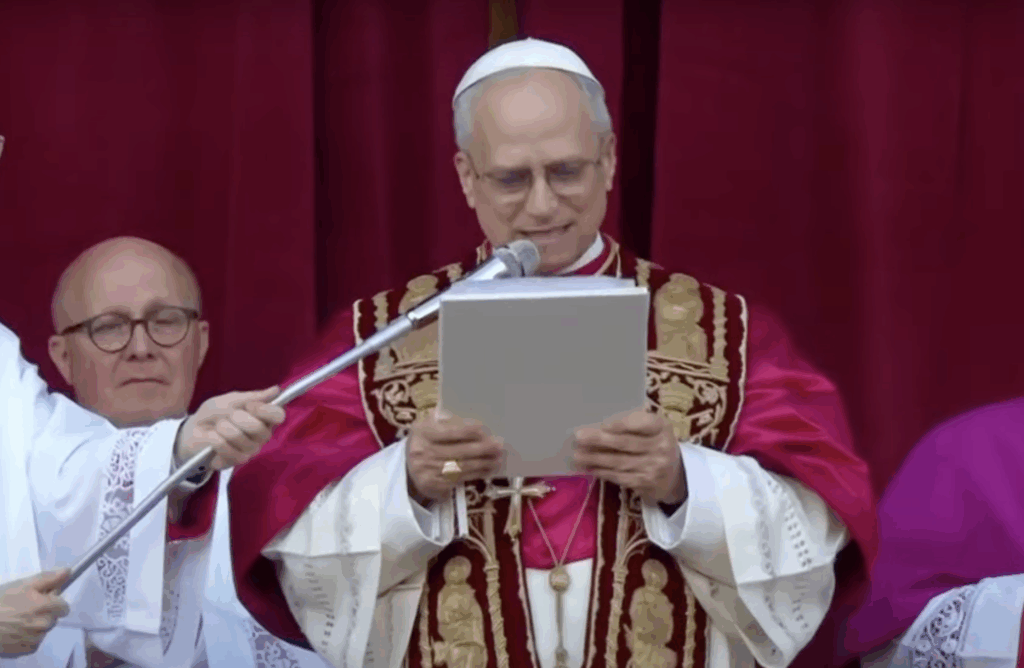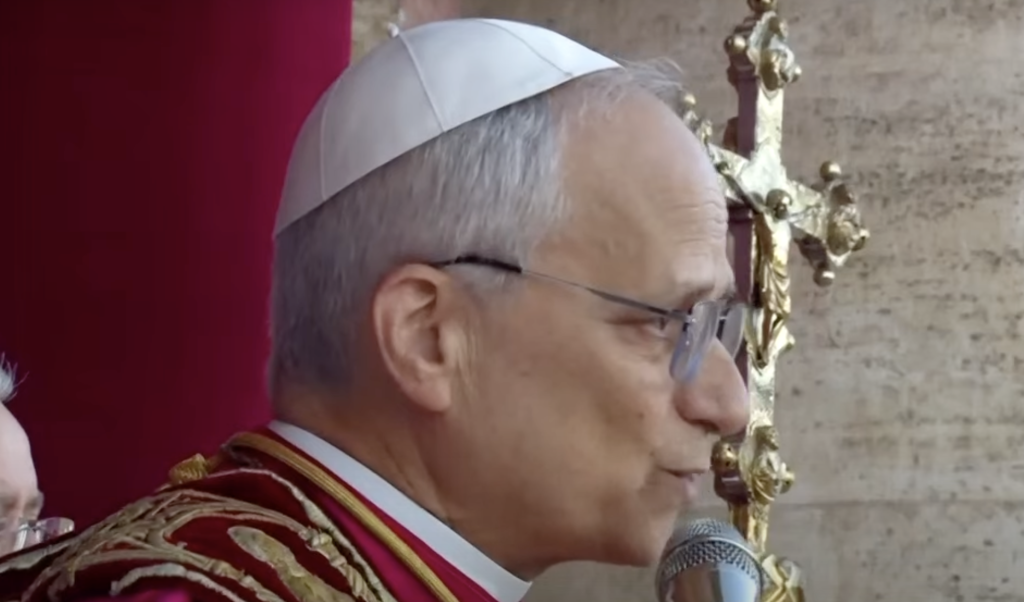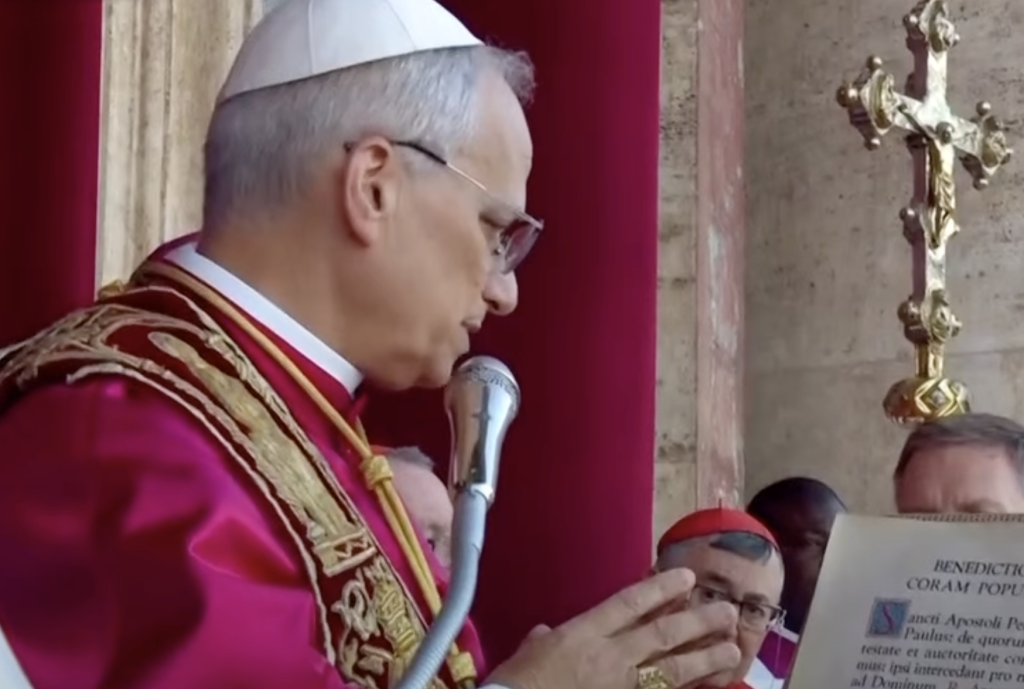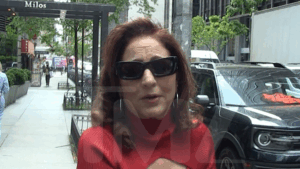
Pope Leo XIV addresses the crowd from St. Peter’s Balcony.<span class="image-caption-credit"> (YouTube)</span>
Pope Leo XIV: First American-Born Pontiff in Catholic Church History
Table of Contents
- Historic Election of the First American Pope
- Early Life and Education of Robert Prevost
- Career Path to the Papacy
- Relationship with Pope Francis
- Linguistic and Educational Background
- The Significance of the Name Leo XIV
- The Political Dimension of the Modern Papacy
- Potential Direction of Leo XIV’s Papacy
In a historic moment for the Catholic Church, Cardinal Robert Prevost, a Chicago-born American with dual Peruvian citizenship, has been elected as Pope Leo XIV. White smoke from the Sistine Chapel signaled the successful election on the second day of the conclave following Pope Francis’s death. This unprecedented selection marks the first time in the Church’s 2,000-year history that an American-born cardinal has ascended to the papacy, bringing his multilingual abilities and extensive missionary experience to the leadership of 1.4 billion Catholics worldwide.
Pope Leo XIV, formerly Cardinal Robert Prevost, addresses the faithful from St. Peter’s Balcony following his historic election as the first American-born pontiff. (Photo: YouTube)
Historic Election of the First American Pope
On the second day of the papal conclave following the death of Pope Francis, white smoke billowed from the chimney of the Sistine Chapel, signaling to the world that the 133 cardinal electors had successfully chosen the 267th leader of the Roman Catholic Church. In keeping with centuries-old tradition, French Cardinal Dominique Mamberti, the senior cardinal deacon, appeared on St. Peter’s Balcony to make the momentous announcement in Latin.
“Habemus Papam” (“We have a pope”), Mamberti declared to the thousands gathered in St. Peter’s Square and millions watching worldwide. He then revealed that Chicago native Cardinal Robert Prevost had been selected for the highest office in the Roman Catholic Church, choosing the papal name Leo XIV.
This election represents a truly historic moment, as Prevost becomes the first American-born pope in the Church’s 2,000-year history. While the United States has long been home to one of the world’s largest Catholic populations, many Vatican observers had considered it unlikely that an American would ever be elected, given concerns about associating the papacy too closely with American political and cultural influence.
Historic Firsts of Pope Leo XIV
- First American-born pontiff in Church history
- First pope from the Order of St. Augustine since the 13th century
- Third consecutive pope elected on the second day of conclave
- First pope with dual citizenship (American and Peruvian)
Early Life and Education of Robert Prevost
Born in 1955 in Chicago, Illinois, to Mildred Martines and Louis Marius Prevost, the future Pope Leo XIV experienced a typical American Catholic upbringing that would eventually lead to extraordinary service in the Church. His father, a World War II veteran and school administrator, and his mother helped foster his early religious vocation.
Young Robert felt drawn to religious life from an early age, entering the minor seminary of the Order of St. Augustine in 1973 to begin his formal religious training. This order, founded in the 13th century and following the teachings of St. Augustine of Hippo, would become his spiritual home throughout his ecclesiastical career.
Following his initial religious education, Prevost pursued higher education at Villanova University, an Augustinian institution in Pennsylvania, where he earned a Bachelor of Science degree in mathematics in 1977. This scientific background, somewhat unusual among church leaders who often focus exclusively on theological training, would later contribute to his reputation as one of the more academically versatile members of the College of Cardinals.

Pope Leo XIV gives his first papal blessing “Urbi et Orbi” (to the city and the world) from St. Peter’s Balcony following his election. (Photo: YouTube)
Career Path to the Papacy
Robert Prevost was ordained to the priesthood in 1982, beginning a clerical career that would take him from the United States to extensive missionary work in Latin America before ultimately leading to the Chair of St. Peter. His work in Peru proved particularly formative, as he dedicated many years to serving the Catholic community there and eventually acquired Peruvian citizenship in 2015.
A significant milestone in his ecclesiastical career came when Pope Francis elevated him to the rank of cardinal, recognizing his leadership abilities and commitment to the Church’s mission, particularly in the developing world. Prior to his papal election, Prevost held several important positions that showcased his administrative capabilities and earned him respect among his peers in the College of Cardinals.
Among his most notable achievements was being twice elected prior general of the Augustinian religious order, demonstrating the high regard in which he was held by his fellow Augustinians. This experience in governance, combined with his missionary background, positioned him as someone who understood both the administrative challenges of Church leadership and the pastoral realities faced by Catholics around the world.
| Year | Milestone in Cardinal Prevost’s Career |
|---|---|
| 1973 | Entered minor seminary of the Order of St. Augustine |
| 1977 | Earned Bachelor of Science in mathematics from Villanova University |
| 1982 | Ordained to the priesthood |
| 1982-2000s | Served as missionary in Peru |
| c. 2000s | Twice elected prior general of the Augustinian order |
| 2014 | Appointed by Pope Francis as administrator of Chiclayo |
| 2015 | Acquired Peruvian citizenship |
| 2023 | Brought to Rome to lead the Pontifical Commission for Latin America |
| 2025 | Elected as Pope Leo XIV |
Relationship with Pope Francis
The election of Cardinal Prevost suggests a desire among the cardinal electors to continue at least some aspects of Pope Francis’s legacy. Francis, the first Latin American pope, showed particular confidence in Prevost’s abilities, handpicking him for several key roles that accelerated his rise within the Church hierarchy.
In 2014, Francis appointed Prevost to serve as the administrator and later archbishop of Chiclayo in Peru, demonstrating trust in his pastoral and administrative capabilities. This appointment allowed Prevost to continue his ministry in Latin America while assuming greater leadership responsibilities.
Perhaps most significantly, Francis brought Prevost to Rome in 2023 to assume the presidency of the Pontifical Commission for Latin America. This prestigious position placed him close to the center of Church governance and increased his visibility among the cardinal electors who would ultimately choose him as pope.

The newly elected Pope Leo XIV greets the faithful gathered in St. Peter’s Square following the announcement of his election. (Photo: YouTube)
Linguistic and Educational Background
One of Pope Leo XIV’s most remarkable attributes is his extensive linguistic ability, which positions him well to communicate with the global Catholic community. He speaks English, Spanish, Italian, French, and Portuguese fluently, and can read Latin and German—making him one of the more linguistically versatile popes in recent Church history.
This multilingual capability reflects his international experience and educational background. In addition to his undergraduate degree in mathematics from Villanova University, he earned a Master of Divinity degree from Catholic Theological Union in Chicago, further building his theological expertise.
His academic training, combined with practical experience in diverse cultural contexts, has prepared him to address the complex theological and pastoral challenges facing the global Church. This background may prove particularly valuable as he navigates sensitive doctrinal issues while maintaining unity among Catholics with widely varying cultural perspectives.
Pope Leo XIV’s Linguistic Abilities
- Fluent speaker: English (native), Spanish, Italian, French, Portuguese
- Reading proficiency: Latin, German
- Academic degrees: B.S. in Mathematics, Master of Divinity
- Cultural immersion: Extended service in Latin America, particularly Peru
The Significance of the Name Leo XIV
The choice of the papal name “Leo” carries significant historical weight within Church tradition. By selecting this name, the new pope connects himself to a lineage of thirteen previous pontiffs named Leo, many of whom left substantial legacies in Church history.
The most renowned pope to bear this name was likely Leo I (440-461 AD), known as “Leo the Great,” who defended Rome against Attila the Hun and made major contributions to Christian theology. Leo XIII (1878-1903) is also particularly well-remembered for his social teaching, especially his encyclical Rerum Novarum, which addressed the rights of workers during the Industrial Revolution.
While the new Pope Leo has not yet explained his choice of name, papal name selections typically signal the direction a pontiff hopes to take in his papacy or indicate which predecessors he particularly admires. The name Leo has historically been associated with intellectual rigor, strong leadership, and engagement with social issues—qualities that may reflect the new pope’s aspirations for his pontificate.
Notable Previous Popes Named Leo
- Leo I “The Great” (440-461): Defended Rome against Attila the Hun; major theological contributions
- Leo III (795-816): Crowned Charlemagne as Holy Roman Emperor
- Leo IX (1049-1054): Initiated reforms; his papacy saw the East-West Schism
- Leo X (1513-1521): Renaissance pope; excommunicated Martin Luther
- Leo XIII (1878-1903): Wrote influential social encyclicals; longest-lived pope until John Paul II
The Political Dimension of the Modern Papacy
As Pope Leo XIV begins his pontificate, he inherits a papacy that has increasingly taken on political dimensions in recent generations. While the pope’s primary role remains spiritual—serving as the spiritual leader of 1.4 billion Catholics worldwide—modern popes have found themselves addressing pressing global issues ranging from climate change to migration, poverty, and armed conflicts.
This political dimension presents both opportunities and challenges. As an American-born pope with extensive experience in Latin America, Leo XIV brings a unique perspective that bridges North and South, developed and developing worlds. This background may inform his approach to issues like global inequality, immigration policy, and relations between wealthy and poorer nations.
At the same time, his American origins could create complexities in the Church’s diplomatic relationships, particularly in regions where U.S. policies are viewed with skepticism. The new pope will likely need to distinguish his pastoral leadership from American political interests while navigating a world where religion and politics frequently intersect.
Potential Direction of Leo XIV’s Papacy
As Catholics worldwide adjust to the leadership of the first American pope, many are wondering what direction his papacy will take. Will he continue the relatively progressive approach of his predecessor Pope Francis, or will he chart a more conservative course similar to Benedict XVI?
His close association with Pope Francis, who personally selected him for important roles, suggests some continuity with Francis’s emphasis on mercy, concern for the marginalized, and attention to environmental issues. However, each pope inevitably brings his own priorities and perspectives to the office.
Leo XIV’s background as both an American and a missionary in Peru positions him uniquely to understand the diverse challenges facing the global Church. His experiences in both the wealthy Global North and the developing Global South may inform a papacy that seeks to bridge divisions between different regions and perspectives within Catholicism.
Key Questions for Pope Leo XIV’s Pontificate
- How will he address ongoing calls for reform within the Church?
- What approach will he take to controversial social issues that divide Catholics?
- How will his American background influence Vatican diplomacy?
- Will he continue Pope Francis’s emphasis on environmental concerns?
- How will he address the continued aftermath of clerical abuse scandals?
Frequently Asked Questions About Pope Leo XIV
| Question | Answer |
|---|---|
| Is Pope Leo XIV the first American pope? | Yes, he is the first American-born pope in the Church’s 2,000-year history, though he also holds Peruvian citizenship. |
| What was his name before becoming pope? | He was born Robert Prevost in Chicago, Illinois, in 1955. |
| What religious order does he belong to? | He is a member of the Order of St. Augustine (Augustinians), making him the first Augustinian pope in centuries. |
| How many languages does Pope Leo XIV speak? | He speaks five languages fluently: English, Spanish, Italian, French, and Portuguese, and can read Latin and German. |
| How was he connected to Pope Francis? | Pope Francis appointed him to several important positions, including archbishop of Chiclayo and president of the Pontifical Commission for Latin America. |
As Pope Leo XIV begins his pontificate, the Church’s 1.4 billion members will be watching closely to see how this historic first American pope shapes Catholic teaching and practice in the years ahead. With his unique background spanning North and South America and his extensive linguistic abilities, Leo XIV brings unprecedented qualifications to the papacy at a time when the global Church faces significant challenges and opportunities.







